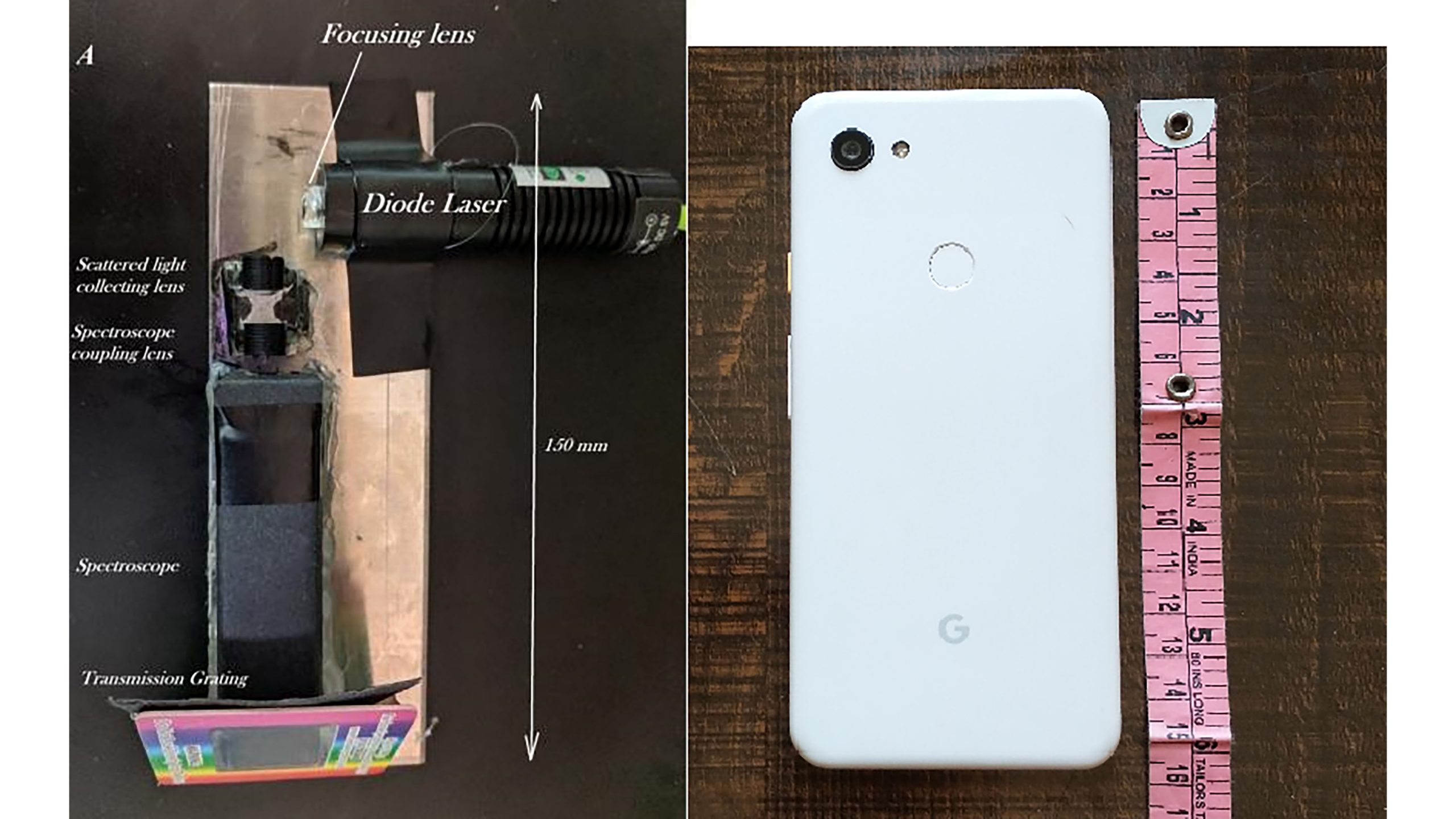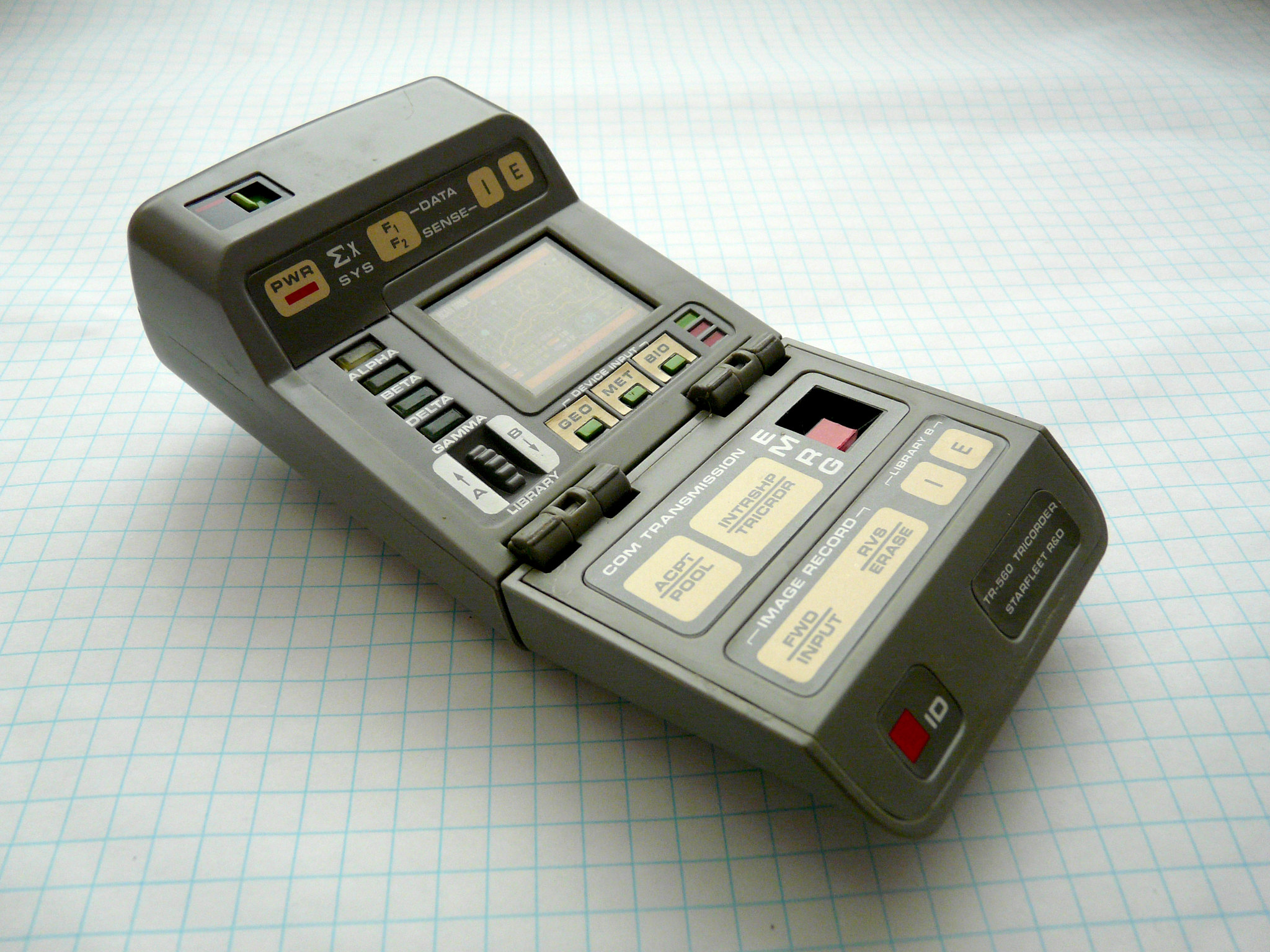Tricorder & Co: Analyzing substances with a cell phone?
In almost all of my novels, the protagonists use devices the size of a smartphone to examine substances they encounter. Current laboratory technology is quite a bit bigger – but that doesn’t have to be the case at all. A team of researchers is now proving this in an article in the Review of Scientific Instruments. The team, led by Peter Rentzepis of Texas A&M, has developed an extension for an ordinary cell phone that allows the device to detect chemicals, drugs, biological molecules and pathogens.
Modern cell phones have high-quality cameras capable of detecting low light levels and eliminating noise through image processing. Researchers are also using this capability to implement two spectroscopy techniques. Fluorescence spectroscopy measures the fluorescent light emitted by a sample. Called Raman spectroscopy, it is useful for detecting molecules such as DNA and RNA that do not fluoresce or emit light at very low intensity.
The system contains an inexpensive diode laser as the light source, which is aligned at right angles to the line connecting the sample and the cell phone camera. The perpendicular arrangement prevents back-reflected light from entering the camera. “In addition, this right-angle excitation geometry has the advantage of being easier to use for analyzing samples where a volume property is to be measured,” said author Peter Rentzepis.
The researchers used their Handy detector to examine a variety of samples, including common solvents such as ethanol, acetone, isopropyl alcohol and methanol. They recorded the Raman spectra of solid objects, including a carrot and a pellet containing bacteria. Carrots were chosen for this study because they contain the pigment carotene. The laser light used in their system has a wavelength that is readily absorbed by this orange pigment and by the pigments in the bacteria.
The researchers compared the sensitivity of their system to the most sensitive industrial Raman spectrometers. The signal-to-noise ratio was about 10 times higher (i.e., better) for the commercial instrument than for the smartphone system. However, the sensitivity of the cell phone detector was easily doubled by using only a single RGB channel for analysis. The system has a rather limited dynamic range, but the researchers note that this problem could easily be overcome by various HDR (high dynamic range) applications that combine images from multiple exposures.
The additional components, including the laser, cost only about $50, making this system an inexpensive but accurate tool for chemical and pathogen detection. All right, from a purely visual standpoint, the researchers would probably have to do some work on the hardware. I’m afraid that the next but one iPhone will then also display the calorie and alcohol content of any food photographed with it in a big and clear way.

